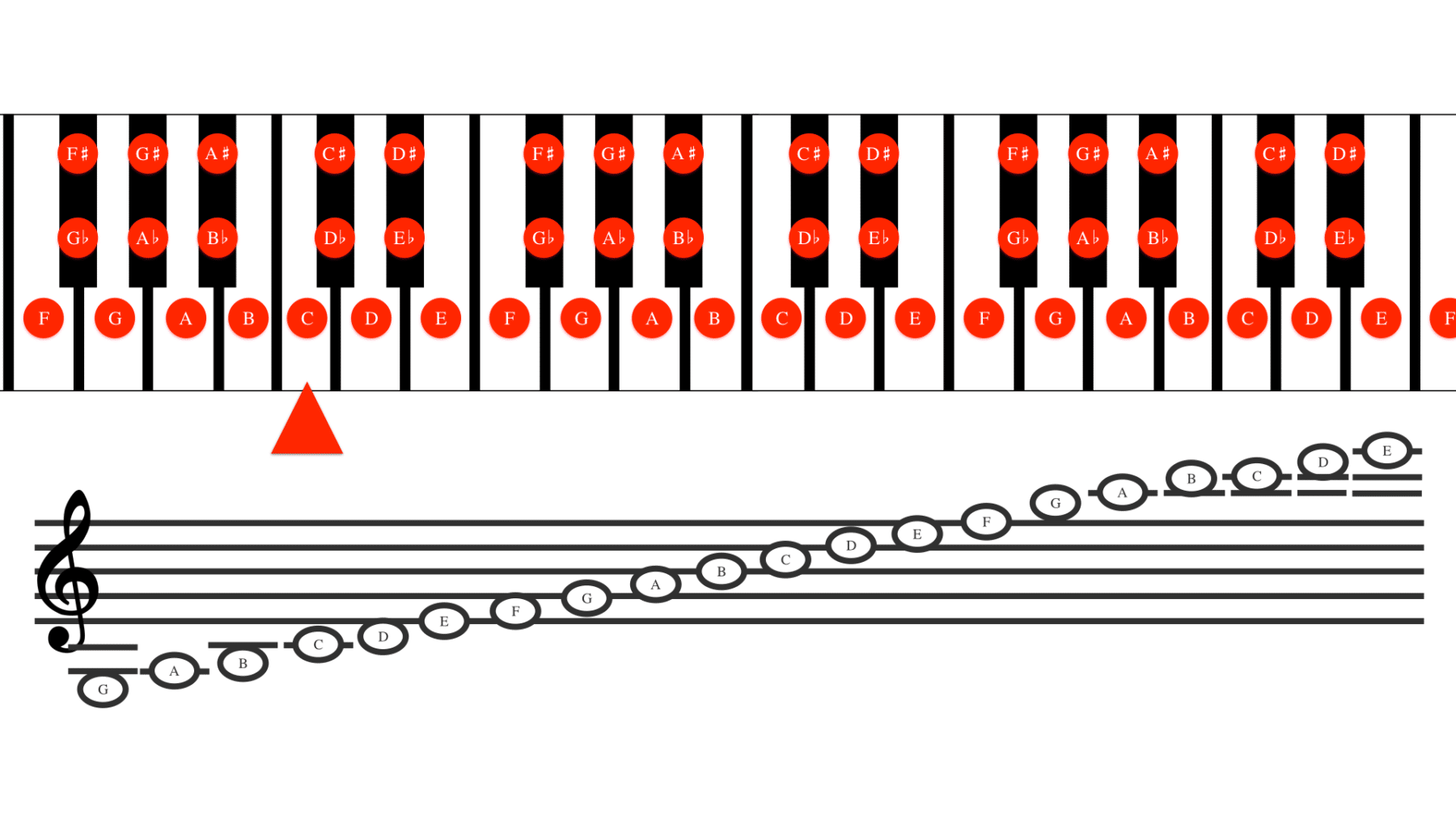Major scales are not only used as a point of reference in keys, but in chord symbols as well. Major scales are the only scales you really need to know as a jazz singer – if you want to learn about music theory – as all else derives from them.
To learn the major scales by heart, you have to know all the names of the notes.
Chromatic sequence
The chromatic sequence is the sequence containing all twelve unique notes in order of their ‘pitch’: their frequency, the height of the tones we perceive.
The easiest way to show it is via the layout of a piano keyboard but here’s the chromatic sequence anyway:
C, C#* or Db, D, D# or Eb, E, F, F# or Gb, G, G# or Ab, A, A# or Bb, B. Upwards the sharps (#’s) are used, downwards the flats (b‘s).
* # is pronounced as ‘sharp’, b as ‘flat’. C# = C sharp, Gb = G flat.
This is what it sounds like. Starting and ending (!) on C. The last C is and sounds the same as the first, only higher. It’s one octave higher. One octave higher means the frequency has doubled!
The chromatic sequence is basically just A,B,C,D,E,F,G plus some notes in between.
Important to remember is that there are no notes in between B and C, and in between E and F. These anomalies are key to the sound and working of the Western Tonal System.

Intervals
The shortest distance between notes in the system is known as a ‘semitone‘ interval.
‘Interval‘ is the musical expression for a distance between notes.
A distance of two semitones is called a ‘whole tone’ interval.
The interval between C and C# (or Db) is a semitone interval, between C and D lies a whole tone interval.
Instead of learning the code for the major scale sequence, it’s much easier and better for understanding music to learn the code for half the sequence of the major scale; a tetrachord – a sequence of four notes.
UWWs
U = the upper case: the note as indicated by the capital letter for example in ‘the major scale of C’ it is the note ‘c’.
W = a whole tone interval
s = a semitone interval
The first half of the major scale of C:
c (indicated by the upper case)
d (a whole tone interval up from c)
e (a whole tone interval up from d)
f (a semitone interval up from e)
This is what this tetrachord – the first half of the major scale – sounds like. Notice it seems to end logical; as though it arrives at its target. More on that when we discuss the “Circle of fifths”.
The complete major scale of C is c,d,e,f,g,a,b,c. Eight notes – of which only seven are truly unique – spanning a range that is known as a perfect octave interval.
Interpreting chord symbols requires you to know all twelve major scales, preferably by heart. Luckily, you don’t need to know any other scales. And you’ll soon be learning how to easily construct major scales via the ‘tetrachord code.’
The piano is probably the best instrument for learning music theory* since its layout is clear and easy to get an overview of, and producing a tone takes little more than just hitting a key**.
* TIP if you don’t have access to a piano, buy the cheapest keyboard you can get or get a keyboard app for your smartphone or tablet – there are lots of those available for free. Learning to play scales and chords, however slow and clumsy, and practicing melodies is one of the best and quickest ways to develop your hearing and pitch. In this context ‘pitch’ is the accuracy of the height of your tones. It will also help boost your improvisational skills!!!
** to be clear: in the end, all instruments are equally challenging to master on a professional level

